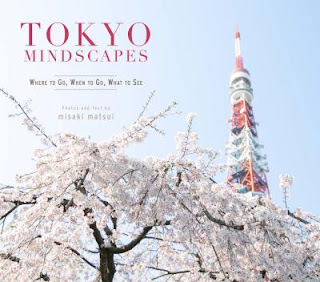It's peace, harmony, gentle touch, romanticism without forgetting modernity, although modernity in its all visibility is immersed in a timeless land, where sacrality is respected by temples, shrines, beautiful gardens, attractions for spirituality and prayers, for wishes, and desires, for expectations, beauty, for an immersion in the nature.
All of it and more, you can find in this beautiful visual, tourist guide that you must bring with you when you will visit Tokyo. Tokyo Mindscapes Where to Go, When to Go, What to See P
hotos and Text by Misaki Matsui is the answer to all your questions. Published by Museyon Inc. I have always loved the spirituality of Japan and this looking at the world always with calm, positive vibes; a touch this one that the western civilization doesn't have.
Every city, in this case a capital, if big is crowded. Tokyo the most populated city in the world can be visited in every season of the year, although of course, you will find a diversification of things to do and places to visit.
There are theaters where you can assist just at traditionals Japanese shows; there are parks and towers similar at Central Park and the Eiffell Tower.
There are gardens that you should visit if you want to capture the moment only in the early morning; other ones that just want per visit 300 people, for keeping the visit absolutely beauty for the eyes and the spirit.
Temples dedicated at the research of a good marriage; other ones devoted at the God who protects business.
There is a big statue of Buddha, there from the 1200s, but also many other ancient places.
There are gardens still in progress, created for restoring peace in the soul and where slowly slowly creators added always more variety of local plants and flowers mentioned, look at the poetic touch, in literature and poetry.
Not only: the idea given wonderfully well by this writer is that Tokyo not only loves its past, but venerates it with great passion, respect, beauty and devotion.
If Chrysathemum is, sadly, for our culture the flowers of our dead ones, Japanese celebrate them and Wisteria with great relaxation, joy and happines in a temple where parents and children search for good grades and admission to big and important universities.
Tokyo is also a tripude of festivals of plants, flowers, trees, cherries in blossom, but not just that ones.
In this season of the year, if you are in Tokyo you can't miss the creative garden of Fukagawa. The Kabuki is a beautiful very old theather, but you shouldn't miss also to visit the so-called Walkable Island, The City of Art.
The Kokakuen Garden named in this way because of a poem that says that the people’s happiness should come before the ruler’s is another magnificient offer of the city for tourists and passionates of peace and tranquility.
If you love hydrangea, there is an old temple all edicated to this magnificient flower.
Aquariums are another attraction of Tokyo with their numerous goldfish of all sorts.
There are spots of Tokyo winking at Elvis and the USA.
There are children busy at preserving the passage of their parents and the large collections of arts and culture accumulated, transforming houses in real museums open to everyone.
Celebrated is also the arrival of fireflies, symbol of beauty of summer in Japan from more than 1.000 years.
Visit the Shrine with more than 100.000 trees from all Japan but don't miss the Mount Fuji as well. It is an active volcano, but the latest eruption in 1707, a lot of time ago.
A place dedicated to nature, beauty and grace of course has also the Institute for Nature Study, part of the National Museum of Nature and Science. All of it, 50-acre forest in the middle of Tokyo. You can't leave Tokyo without tasting Maguro-Zukushi. Toyosu is the most important fish market of the city. An experience.
For all the lovers of Art Deco, there is the Tokyo Metropolitan Teien Art Museum and if in Tokyo during the Christmas's season you can't miss the Blue Lights.
At the end of the book a functional calendar with the most important events and places to visit, a map of the city with informations and the most relevant places to visit and their history, starting with the city of Tokyo.
Beautiful, relaxing, I would want to go right now in Tokyo for finding that peace sometimes lost in our culture and so well defined there.
The city of Tokyo passes through temples, shrines, but also dedication at nature, flowers, plants, gardens. I love it so badly. We musn't find Heaven once dead, but when we are here, although grace, beauty, harmony, calm, serenity are values sometimes not practiced.
Tokyo, for everyone too stressed, is a city to visit for re-connect the spirit at the harmonic universe surrounding us.
Highly recommended.
I thank Museyon Inc. for this ebook.
Anna Maria Polidori












